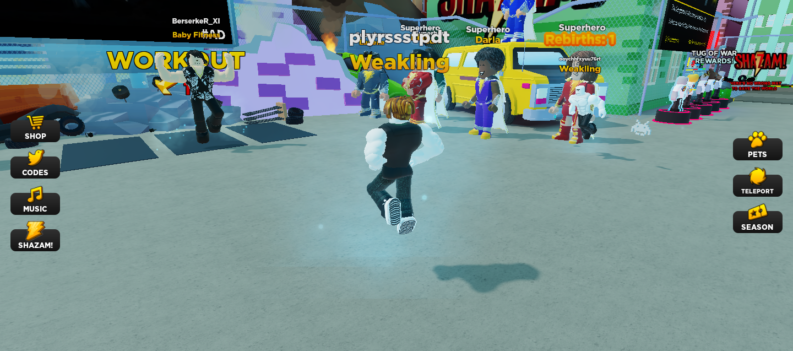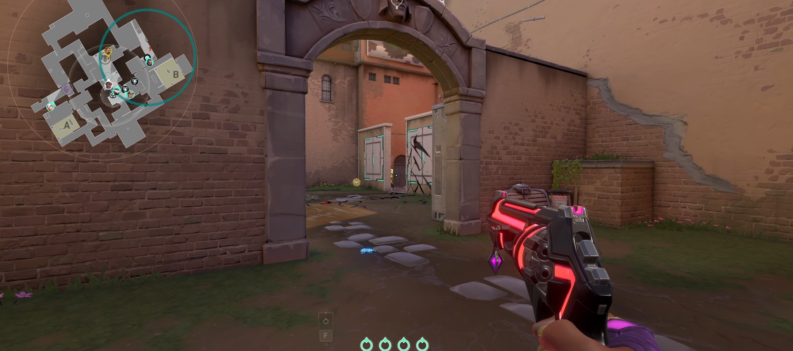Both maps share a three-bombsite layout, but the similarities end here.

Lotus has been one of the more interesting new maps in the game due to its three-bombsite layout. That is not to say other recently released maps, such as Fracture and Pearl, are bad maps; there is just something different about having to defend three bombsites instead of the typical A Site-Middle-B Site layout many tactical FPS players have gotten used to over the years.
Lotus is not the first of its kind in VALORANT, as an older map in Haven has already given players a taste of what it’s like to Attack/Defend three different bomb sites in a single map.
If you are thinking about employing the same tactics you use on Haven when Attacking or Defending Lotus, you will have to think again – subtle yet significant differences between these two maps completely separate the two in terms of strategy.
Haven Overview

Haven is arguably one of the most visually pleasing maps in VALORANT, featuring lush greens and beautiful Eastern architecture that give off a very relaxing vibe.
The map offers a very challenging gameplay dynamic for the Attacking and Defending team due to its three-bombsite layout.
The three bomb sites on the map make Haven a thrilling and exciting map to play in, regardless if you are on the Defending or Attacking side.
A-site

A site on Haven features a more traditional layout with two entrances, a default plant spot in the middle of the site, and an elevated vantage point in Heaven.
If you squint your eyes, you might even see a bit of resemblance between the Haven A-site and Mirage A-site from CSGO, as the sightlines are fairly similar between these two maps when looking from Heaven or Palace, respectively.
While there are tons of covers that Defenders can use on A-site, the Attacking team should still have the edge on A-site.
A simple smoke at A-Heaven and the entrance leading to Defender Spawn should easily block off the Defending team’s sightlines toward the bomb site.
If the Attacking team plays their cards right post-plant, the Defending team should have close to zero chance to retake the bomb site, as the only way to rotate to A-site is through the predictable and narrow entrance at Defender Spawn.
B-site

B-site is a nightmare to control as an Attacker in VALORANT, as there is only really one way toward B-site – the B-site Entrance.
Unlike A-site or C-site on Haven, the Attacking team will not have a secondary lane they can use to flank the enemy team on B-site. It also does not help that B-site’s entrance is basically a choke point where Sentinels such as Sage, Chamber, Killjoy, and Cypher can easily ruin the Attacking team’s entry toward B-site.
With that said, Controllers such as Omen, Brimstone, and Astra can easily block off A-Link and C-Link to deny the Defending team’s vision toward B-site and make B-site entrance somewhat more manageable for their team.
C-site

C-site is probably the easiest bombsite to Attack on Haven since the Attacking team has the option of pushing C-Garage and C-Long simultaneously. The only real challenge is pushing through C-Long’s long and narrow chokepoint.
Post-plant should be a breeze as well since the Attacking team can simply plant the Spike for a C-Long post-plant play. The C-site’s open skybox allows for easy post-plant Viper molly lineups or Sova Shock Darts.
The Defending team has it pretty easy as well, thanks to the numerous platforms and cover they can use to catch the Attacking team off guard. (The area behind C-Default, C-Platform, and C-Logs quickly comes into mind.)
The Defending team also has the advantage at Round Start since they are given an instant sightline toward C-Long from C-Default even before the barrier drops.
Lotus Overview

Every map in VALORANT features what the devs call a ‘Dynamic Element’ that help give maps their own unique identity.
Bind has its Teleporters, Fracture has its long zip lines, and Lotus has the Mechanical Rotating Doors, breakable wall, and silent drop.
Lotus’ Dynamic Elements combine to give players a fresh take on the three-bombsite map experience that they have come to know from Haven, giving the new map a distinct gameplay experience that separates it from Haven.
A-site

Attacking A-site Lotus will be difficult, but the Attacking team will be greatly rewarded for their efforts. Gaining full control of the A-site will not only give the Attacking team a whole bombsite to play with, but it also gives them access to rotation lanes at Defender Spawn.

A-site on Lotus is very similar to A-site on Haven as both maps feature an elevated platform (A-Rope and A-Heaven on Lotus and Haven, respectively) and two entryways that the Attacking team can use to enter the bomb site.
On Defense, the Defending team should play aggressively at A-Lobby and deny the Attacking team control of the breakable door as much as possible.
With that said, playing within A-site is also a very good option, as the bombsite offers a ton of cover and off-angles for Defenders.
B-site

Attacking B-site on Lotus is as simple as laying down smokes at the Upper B area/A-Link/C-Waterfall and rushing in with some help from your teammates’ flash abilities.
B-site on Lotus is a small and relatively simple space that offers very little for the Defending team regarding cover, as all of the cubbies and angles are concentrated toward the B-Main area.
However, this also works against the Attacking team, as they are basically sitting ducks if they try to defend the Spike post-plant from within B-site.
C-site

C-site is arguably the most difficult bombsite to attack Lotus. The Defending team has a clear sightline advantage toward C-Lobby early in the round, allowing the C-site Defender to spot and report an incoming Attacker push toward C-site.
Things do not get easier for the Attacking team upon entry on C-site due to the multitude of hiding spots within C-site that the Defending team can use to catch incoming Attackers off-guard.

Post-plant for the Attacking team can be very challenging as well since the only sightline they can use post-plant to guard the bomb is from C-Mound.
Haven Versus Lotus
It’s easy to mistake Lotus for another Haven-like map just because it shares a similar layout to the latter. However, a small yet important difference between this pair of three-bombsite maps is enough to change how the Attacking and Defending sides on the map are being played.
In a recent Twitch stream, VALORANT Coach Woohoojin shared the best way to play Lotus and how the new map differs from Haven.
The first difference between Lotus and Haven is the mid-round options for the Attacking team. On Haven, the Attacking team will have no choice but to back off and rotate to a different bombsite when their initial attempt to control a bombsite is met with resistance.
While this seems like a harmless and obvious move for the Attacking team, the Defending team can use the delay to flank the Attacking team while their teammates keep them off the bomb site.
On Lotus, the Attacking team can quickly rotate to another bomb site through the breakable door in A-Link or the Mechanical Door connecting B-site and C-Mound if an initial attempt to control a bombsite is proving difficult.
On Lotus, if you five-stack push A and you encounter friction and can’t push, you can simply push B without rotating back.
Woohoojin on the main difference between Haven and Lotus.
In addition, Woohoojin suggests that teams stack and play A and C to bait the enemy team into playing aggressively (flanking, for example). Since there aren’t a ton of flank corners on Lotus, the stacked Attacking team can gang up on aggressive Defenders easily.
Like Cousins
On Haven, the Attacking team must commit to their push or risk having the Defending team creep up on them from behind. On Lotus, the Attacking team can use alternative connecting routes between bombsites as a plan B when their initial push proves unsuccessful.
Besides having three bombsites each, Haven and Lotus are very different maps that require a completely different set of strategies to win. For now, the pros are finding a ton of success on the new map through full-stacking and pushing A-site or C-site on Lotus.















